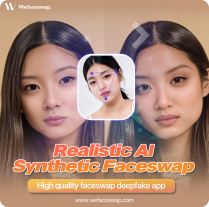AI Face Swap Tools: What You Need to Know
AI Face Swap Tools: What You Need to Know
Blog Article
AI Face Swap in Entertainment and Beyond
The change of experience change technology from the trendy novelty to a popular development is nothing short of fascinating. Originating as a great filtration on early picture apps, face trades have now become an intrinsic section of social media content generation and even qualified industries. Using its quick evolution and increasing popularity, kpop deepfake engineering has captivated millions worldwide. Platforms like Face Exchange have performed a significant position in this trend, offering advanced and revolutionary face trading techniques which are simple to use.

Deepswap is really a cutting-edge strong understanding engineering that enables for supreme quality experience swaps with just a few clicks. It employs synthetic intelligence (AI) calculations to analyze face characteristics and easily replace them with still another person's. It has opened an environment of creative opportunities, letting consumers to generate jaw-dropping visible effects and distinctive content. Let's explore a number of the interesting projects you may make with Deepswap.
The Early Times of Face Swap
Face trade technology first seemed in the first 2010s with fundamental photo-editing apps. These early iterations were frequently clunky, making amusing but glitchy effects that fueled its appeal strictly as entertainment. People could swap encounters with buddies, pets, or even a-listers, sharing these amusing photos on social media marketing platforms. While basic, that entry-level engineering exposed the door for designers to explore their untapped potential further.
Development Forced by Cultural Press
Fast forward to the mid-2010s, and the rise of applications like Snapchat and Instagram catapulted face trades into popular culture. That which was after limited to static photos was today being changed in to real-time video filters. FaceSwap, Snapchat's renowned lens, became certainly one of their most widely used functions, interesting millions of customers daily. Reports suggest that by 2016, around 60% of Snapchat people had tried its experience trade function at the very least once.
Concurrently, social networking influencers started adopting face swaps for content creation, heightening proposal through imagination and humor. That rising trend further cemented the technology's presence in popular culture, planning beyond leisure and emerging as a strong instrument for storytelling.
Advanced Engineering and Broader Applications
Today, developments in synthetic intelligence (AI) and device understanding have enhanced experience trade instruments, making them more precise and effective than their predecessors. Deepfake engineering presents the cutting-edge sphere of face swapping, enabling hyper-realistic overlays of 1 face onto another. Beyond leisure, qualified areas like filmmaking, advertising, and even electronic knowledge have embraced these innovations.

For example, in 2021, studies indicated that nearly 15% of digital marketers were tinkering with AI-driven movie personalization applying sophisticated experience swaps. This shift demonstrates how face trade technology is crossing into realistic programs, encouraging their growing popularity.
A Tendency on the Increase
What makes experience swaps evergreen is their convenience and adaptability. Thanks to mobile-friendly programs powered by AI, everyone can try out face trades without technical expertise. Whether for lighthearted fun or skilled use, the expansion with this technology implies extended growth.
From its modest origins as a photo-editing novelty to its modern-day purposes in AI and advertising, face trade technology has evolved remarkably. With more developments on the horizon, this tendency is defined to keep their recognition for years to come.
Report this page